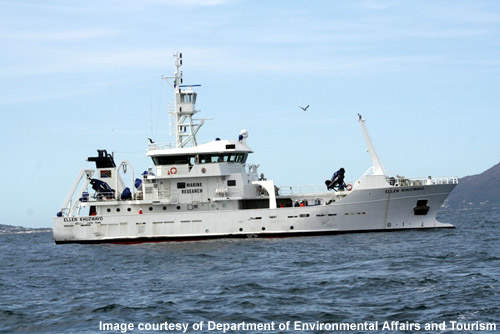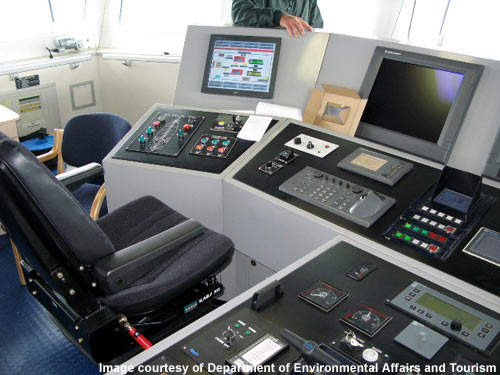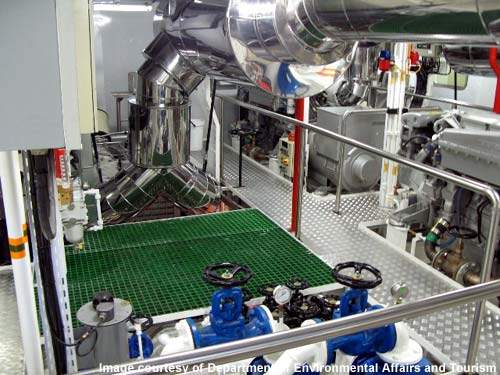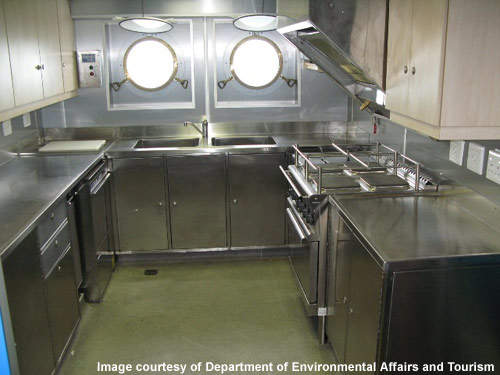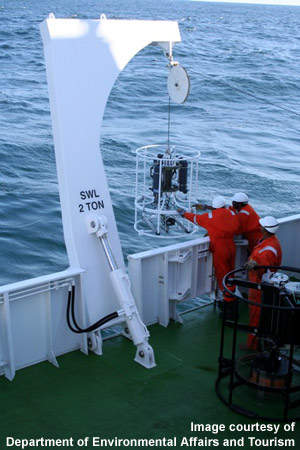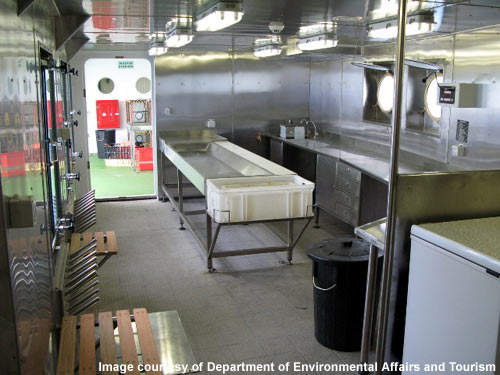In September 2007, the Ellen Khuzwayo (ST-331) entered service in South Africa to undertake research into fisheries, marine resources and oceanography. Launched in May 2007 at the V&A waterfront in Cape Town, the vessel is owned and operated by South Africa’s Department of Environmental Affairs and Tourism (DEAT) and will used primarily for in-shore work, although it is configured to operate anywhere within 200 nautical miles of the shore.
The vessel is one of three ships operated by the DEAT, along with the Africana and Algoa, and replaces the Sardinops after its 50-year service.
In keeping with the tradition of naming government vessels after notable South African women, the ship was named after teacher and author Ellen Khuzwayo, a prominent anti-apartheid activist.
SHIP CONSTRUCTION
The ship was designed by Norwegian company Skipsteknisk AS and constructed in Cape Town by Farocean Marine. The 43.2m-long ship cost R100m to build.
The ship has a perpendiculars length of 38.70m, a moulded breadth of 10.20m, a depth to main deck of 5.20m and a depth to forecastle deck of 7.70m. The vessel’s deadweight is approximately 250t.
The ship has a service speed of 13kt and can accommodate 21 crew (14 cabins, seven double cabins and seven single cabins, all with their own bathroom facilities).
The vessel has a fuel oil bunkering capacity of 130m³ and can carry 35m³ of drinking water.
The ship is equipped with a passive stabiliser tank as anti-rolling technology.
RESEARCH
To conduct its marine research, the vessel is equipped with four fully-fitted laboratories: two wet labs for fish and plankton sampling, a dry lab for oceanographic studies and a CTD lab.
The ship uses state-of-the-art oceanographic and advanced acoustic equipment for fish finding surveys, along with several winches for setting and recovering instruments. The vessel has also been fully rigged for in-shore diving operations.
The ship has an operating range of 2,500 nautical miles and can stay at sea for up to 20 days.
The ship’s notation designation is LLOYD’S +100 A1, G4, UMS 4, LMC, Mono, Research. The ship has been fitted out with a range of scientific equipment and sonar including a Seabird Thermosalinograph (TSG) system, Seabird Remote Temperature Probe, Seabird CTD and Rosette system, Simrad EK60 Scientific Echo sounders and RDI Instruments Acoustic Doppler Current Profiling system.
PROPULSION SYSTEMS
The ship has a twin propeller and diesel mechanic system. The main propulsion units are two MTU 8V4000s, each producing 700kW at 1,600 rpm. Two Wartsila Lips CP propellers (2,200mm and 220 rpm) and two ZF gearboxes.
The ship also has a HRP bow tunnel thruster. Three MTU S60M auxiliary generators, each rated at 220kW, provide power.
The scientific winches were provided by Rapp Hydema AS and the working winches by Hydrakraft. The deck cranes were supplied by Palfinger.
NAVIGATION SYSTEMS
The ship includes two X-band ARPA radars with 21in displays, a gyro compass, an auto pilot, a sophisticated differential GPS system, a Doppler speed log, an ECDIS chart system, a navigation echo sounder, a meteorological station, a satellite communications system and a GMDSS communication system.
The ship’s internal systems include a CCTV system and a local area network for research data processing.

